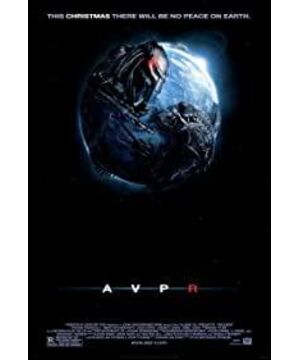First, let me talk about the consistent US approach to the "West". When the United States was founded, there were only 13 states in the east, and the east was the first to develop. Later, through the Louisiana Purchase of 1803 and the Mexican War of 1946-48, the United States owned the entire continent. Since 1804, Americans have launched the famous westward movement. Inevitable is the contact with Indians and Mexico. It is not so much contact as it is to drive the Indians away with violence, so the westward movement can be said to be the first step of American imperialism. From then on, people from the east to the west began to have a good vision for the west, and of course the influence of the mainstream media at that time was indispensable. The early mainstream media at that time was oil painting, and the famous art genre was Hudson River School. Painters included George Inness, Frederic Edwin Church and so on. Most of these oil paintings depict a bright and hopeful west in the west, encouraging people in the east to leave the dark east.
In addition to oil paintings, there are of course photographs. Since the introduction of the Dagol silver plate camera in 1839, photographs have been used to record western landscapes. Although most of it was used as a reference for other more mainstream media at the time, such as oil paintings, full-scale paintings, and lithography. This is because the camera was too difficult to operate at the time, and the photo could not be copied, and it was shot on a piece of glass instead of paper. But the content is similar to oil paintings, trying to collect the beautiful natural scenery in the west, attracting people from the east to migrate, and collecting information for the construction of the transcontinental train. After the invention of paper photographs and negatives, photographs became more and more popular.
But no matter whether it is oil painting or later photos, the description of Indians is focused on one point of view. It is that they are a group that is about to disappear. These mainstream media will praise the assimilated Indians and at the same time emphasize the inevitable disappearance of their ethnic group. The book Print the Legend by Sandweiss gives a detailed explanation. This is because the white people think that the Indians themselves are one level lower than the white people, so it is only natural for them to disappear before the advanced Western civilization. But in fact, they concealed the fact that they massacred and expelled Indians. The trail of tears of the Cherokee tribe in 1831 is a typical example. The Indians are a group of lower animals, living the hunting life of primitive people. At the same time, due to the influence of mainstream media, the American West Cowboy has become a heroic image. Because they conquered the savage lands in the western part of the United States. At the same time, it paved the way for the future world imperialism of the United States. The United States had a word in the 19th century called "manifest destiny", which means that the destiny of the United States must go to the west and conquer the west, including foreign countries.
At the same time, the blacks are not so much better. The mainstream media portrays the image of blacks similar to the Indians, they are primitives, and they are the connection between humans and orangutans. Of course, the theoretical basis is Darwin's theory of evolution. At the end of the 19th century, the US government began to use mug shots to record black criminals. The so-called mug shot is what we call the mug shot now, which means that we must take the mug shot for all the documents. But in addition to the judiciary, some photographers also use mug shots as "evidence" to support the inferiority of blacks to whites. It also uses a variety of scientific terms and biological theories to analyze the face of blacks. So black people appeared in mug shots, giving people the impression of criminals and animals. These media exaggerations also provide a convenient excuse for American slavery and imperialist colonial aggression.
But there is another purpose of portraying black people in this way, which is to discipline American women at that time. After the end of the Civil War in 1865, despite the abolition of slavery, white Americans, especially the owners of large farms in the South, could not accept the equal status of blacks with themselves, so they tried every means to discriminate against and attack blacks. The United States therefore entered a reconstruction period, which can be translated as an adjustment period. Jim Crow's discriminatory policy began here. But the most terrifying and chilling thing is that there were many incidents of burning black people alive in the United States at that time, called Lynching in English. These evil deeds continued until the 1960s. At that time, their biggest excuse for burning black people to death was that they were criminals who raped white women. Of course, many of them were made out of nothing. This is a very complicated issue. First of all, white men do fear that blacks and whites will marry, because their offspring will blur the line between black and white. On the other hand, they want to redefine the noble status of white people in this way. But another very important reason is to tell white women that they are white people’s property and no one else can touch them.
This was related to the women's movement that had just emerged at that time. The earliest white people in the United States were English, and their ethnic group was Anglo-Saxon. After they came to the United States, they still hope that women will maintain the Victorian tradition. It is the role of a woman as a good wife and mother. They cannot show their faces, cannot work, and cannot participate in any politics. They are only suitable for staying at home, playing the piano, mending clothes, and teaching children. However, at the end of the 19th century, women began to pursue their rights more actively and began to oppose this patriarchal suppression. So by using blacks to rape white women as an excuse to burn blacks to death, we can tell white women well that in order to maintain this balance, white men can do anything and let them know that they are white men's. A piece of property. Therefore, the mainstream media at the time described blacks as primitives and criminals, and burned blacks alive. In addition to providing an excuse for colonial aggression, it could also maintain the division of labor before the Civil War and consolidate the secondary status of white women. You can refer to the book Photography on the Color Line by Shawn Michelle Smith.
On the other hand, since the introduction of photography in 1839, it has been used to satisfy the voyeuristic desire of mankind, especially men. Photography and voyeurism are basically two inseparable things. Peeping is not necessarily a peeping in a direct sense. Modern general camera monitoring is also true. We usually take pictures of others when they are not paying attention. Because most people think that photos taken without the knowledge of the subject are the most authentic. But one of the biggest victims of photography is women. Since then, women have become a sex object admired by men in front of the camera. This is true of American fashion magazines, TV series, and movies. The camera or character often focuses on the female body part, chest, thighs, buttocks, waist, etc., or the face. To study this theory of voyeurism and the transformation of women into sex objects, among the most famous in the West are Michel Foucault and Laura Mulvey. Among them, Mulvey's movie analysis is more applicable to the movie AVPR. She said that white women (especially their bodies) satisfy men's voyeuristic desires in many Western movies. They are completely passive sex objects that are appreciated by men's gaze. These women have a characteristic called to-be-looked-at-ness. Women are usually completely denied, that is, they are redeemed. This is because white men are constantly struggling in the two female images of sex object and pure mother. According to Richard Dyer, a famous scholar who studies white people's understanding of their own race, the image of white women comes from the Virgin, so they are the purest. Everyone knows that the Virgin scared Jesus without having a relationship with Joseph. And white men have to reproduce the next generation through sex, so white men have been struggling between sex and purity.
Having said that, it's time to talk about this movie. But I suspect that everyone can start to re-examine this movie.
The first story happened in Colorado, a western state. This state was acquired during the American-Mexico War, which is one of the states tamed in the Westward Movement. Indians have lived in this state for 1,300 years. The film clearly focuses on the "western" characteristics of the state. In the beginning it was a forest, and father and son were hunting. The city is very simple, without high-rise buildings, the only two buildings that everyone sees most are a classic western bar and hospital. When shooting the bar, I also used that nostalgic method to shoot. It looks like a nostalgic photo, and it feels like a yellow transparent film is separated in front of the lens, as if to bring the audience back to the 19th century. In fact, think about it. The first of the two Predators takes place in Guatemala, a Central American country. The scene is a forest. The background of the story is to rescue cabinet ministers kidnapped by local militants. The second part takes place in California, the western United States. Although the place is a city, it is very chaotic, without any order, and there are many Latins. So both films are related to Latin, violence, and chaos. Both protagonists appear as a sort of order. This is the same as the American portrayal of the West, other South America, and the Philippines at the end of the 19th century and the beginning of the 20th century. In order to become famous at that time, the image created by the American media was to use American civilization to organize the world order. In 1898, there was a very classic comic called "Uncle Sam's New Class in the Art of Self-Government". Inside, there is the United States disciplining Puerto Ricans, Hawaiians, Filipinos, and Cubans in the classroom in the image of Uncle Sam. So this film is obviously related to American colonialism.
If the background is not obvious enough, look at one of the protagonists of the story, the predator. Although it (he?) appears as a representative of an advanced civilization, it looks more like a tribal man. The hair is like an African, and there is always a string of skull necklaces hanging around the neck. It came to the earth to hunt. It is also a traditional ritual for a nation to fight aliens, once every 100 years. And their society has an obvious hierarchical system, so their society is more like an Indian tribe, not like a highly developed civilization. Moreover, the predator's killing tactics are also in line with the original European colonists' impression of the Indians. The famous American racial scholar Ronald Takaki quoted the British literary scholar Frank Kermode in his book A Different Mirror, saying that the colonists at the time believed that the Indians were barbaric, primitive, and cruel. Not only like killing people, but also like torturing people, like skinning people with fish bones alive. So obviously the description of the predator shows the American colonial ideology and the discriminatory image of the Indians. But why does predator represent a super-advanced civilization? I will explain later. But before that, I want to talk about the other two roles and bring up another question.
This role is the two female characters in the play, a vase and a mother. Let me talk about the vase Jesse first. When I was watching this movie in New York at the time, I obviously felt that this female character had no character portrayal, and the scene in the swimming pool was very far-fetched and redundant. So her only role in the movie is a sex object, used to be appreciated by men, to be lustful, and to satisfy men's voyeuristic desires. The scene in the swimming pool is most obvious. Although the male and female characters are not cheating, they are also sneaky. Taking off the clothes, the camera moves slowly from bottom to top of her body. On the one hand, it allows the (male) audience to devote themselves to the role of the man and appreciate the woman’s body, and on the other hand, it satisfies the desire to peep at both of them. . Obviously, what Mulvey wants to show is to-bo-looked-at-ness. Another female character, an incompetent mother, said at the beginning of the story that she could not get her daughter's approval because she left her family to become a soldier. So she was not a woman in the traditional sense at the beginning of the story. But when she returned home and changed back to the role of a wife and mother, she slowly changed into a hundred kinds of American women in front of the screen familiar to American audiences. She and her husband’s intimate episodes, reading stories to her daughter (despite her daughter’s refusal), ambiguous eye contact with another actor in a bar, and finally protecting her daughter, etc. All kinds of descriptions let the audience (and her Daughter) slowly accept her. So two female characters, a complete sex object and a loving mother, finally the sex object was completely denied as Mulvey said, she died, and the loving mother survived. So from these two female roles, we can see the fixed identities and roles played by hundreds of American women in American society. To sum up, on the one hand, white women are a sexual tool. This concept is reflected in many movies, such as Tomb Raider, Resident Evil, etc. More, Superman, Spiderman, etc.
In addition to Indians, colonialism and women, of course, there is also the most prominent racial conflict in the United States, which is the conflict between blacks and whites. Although I don't want to say that, but I feel that the black person in the movie is another monster predalien, a hybrid of predator and alien. First of all, the reproduction of predalien described in the story is all through the body of white women, although at the beginning aliens are reproduced through men. The most classic episode is the last evacuated scene in the hospital. The scene depicts the babies in the hospital many times, and then predalien sows the pregnant women. That scene was really shocking, because unlike the previous type of seeding on human faces through facehugger, predalien directly inserted a thing into the mouth of a human (all white women) and poured the fetus into it. The situation at the time was almost like that white woman was performing oral sex for the alien. When the camera showed a close-up of the woman's throat, it was more like the woman swallowing semen. Although the scene was terrifying, it was undeniable that there was pornography in it. The alien baby born out is also in sharp contrast with the human baby in the previous close-up. When I saw this, I immediately remembered the excuse that whites used to discriminate against blacks in the 19th to 20th centuries, and even burned blacks alive, that blacks raped white women. This movie seems to reinvigorate that excuse. Alien not only raped white women, but also gave birth to offspring, which will destroy white offspring. Have you noticed that apart from a black officer and a black police officer, there are basically no blacks in the story. This is of course related to the population structure of Colorado, but on the other hand, it is more convenient to show the mission of white men to protect white women. Like the last two centuries. Indeed, the last escape story in the hospital is the story of a white man protecting a white woman. One of the male protagonists (the elder brother) said before going to the hospital that everyone must first protect Kelly. This is the declaration of a white man to protect a white woman, and that Kelly is a mother and represents a white family. Of course, he said this sentence may be because Kelly can fly a helicopter, but who can guarantee that this is not because of their relationship? Since the two of them met in the bar and sent each other off, the relationship between the two people was ambiguous, and the dialogue between the two people in the scene when they took the weapon confirmed this again. The same is true for that Jesse, she is absolutely weak, absolutely dependent on the protection of men, and the one who protects her is the younger brother Ricky. And that pre Dalien has a black haircut, and an advanced civilization without a predator is a pure beast. So predalien is the character transformed from the black image, reminding white men once again to defend the future of white society and the "purity" of white women. The most famous and most direct movie of this kind of infringement of white women with characters transformed from black images is King Kong, King Kong. The orangutan was killed because he fell in love with white women.
Finally, it's time to talk about the role of predator. I feel that Predator is originally an ambiguous character. On the one hand, it represents the Indians and continues to give whites an excuse to conquer "nature" (nature refers to countries that are relatively underdeveloped, such as South America, the Middle East, and Southeast Asia). On the other hand, the predator itself has plots depicting its justice in both the predator series and the AVP series. In predator I, It did not kill the woman in the forest; in the sequel, it let the female police officer off because it found that the female police officer was pregnant, and in the end the "chief" was the hero chanting the hero and gave the gun to the male protagonist; in AVP1, it let it go For the old man with lung disease, he "formed an alliance" with the heroine; in AVPR, it could also kill one of the heroines and her daughter in the grave scene, but it did not do so either. It feels as if the screenwriter wants to portray it as a noble hunter. Every time he met a respectable opponent, he would take off his helmet, and everyone played fairly. I also feel a bit inexplicable, why give it such a gentlemanly demeanor? The only conclusion I have reached, although a bit far-fetched, is that the role of predator itself represents white men, especially white men, and the symbolic meaning of the image is in it. This is why it represents advanced civilization. On the one hand, hunting is the survival of the Indians. On the other hand, in modern American society, it also represents the values of the white middle class and is a high-consumption entertainment. White people like to hunt in the west, but not everyone can hunt. First of all, you must have money to buy equipment and equipment, ask for a tour guide, and have time. Generally, low-income families in New York simply do not have this opportunity. This hypothesis can also explain why predator represents advanced civilization. And look at its noble behavior. Four of the four movies, three of them have plots that spare white women (Although Predator I and II are Latin, their appearance is very close to white), so there is no doubt that predator has white men. Kind of defending the image of white women. Moreover, in the AVP series, they fight against aliens who don’t have any reason. The justice side of the predator is more prominent. Just like the Italian archaeologist in the first episode said, "the enemy of my enemy is my In the last chapter of the book, Line, it analyzes many photos of the scene where whites burned blacks to death. The scenes are almost the same. The black man was hung from the tree and burned to blood, and then the white man looked under the tree. Of course, in the movie, the white people are skinned, but this scene is hard not to remind people of the photos of black people who were burned to death at that time. And those photos were widely circulated at the time, because burning the blacks was like a carnival at the time. The white women, young and old, went to see them, and people took pictures for souvenirs, and then sent those photos into postcards to family members who were not present. Therefore, the peeling scene is difficult to remove the suspicion of lynching. So predator is a vague character, both righteous and evil. On the one hand, it is a symbol of Indians and on the other hand, it is the image of white people. Some people may say that mixing the two images together makes people think that white people are indistinguishable from Indians? Indeed, those lynching photos left by the United States at that time have this effect, and Shawn Smith made it very clear in the last chapter. So it is dangerous for the director or screenwriter to do so. In the last chapter of the book, Line, it analyzes many photos of the scene where whites burned blacks to death. The scenes are almost the same. The black man was hung from the tree and burned to blood, and then the white man looked under the tree. Of course, in the movie, the white people are skinned, but this scene is hard not to remind people of the photos of black people who were burned to death at that time. And those photos were widely circulated at the time, because burning the blacks was like a carnival at the time. The white women, young and old, went to see them, and people took pictures for souvenirs, and then sent those photos into postcards to family members who were not present. Therefore, the peeling scene is difficult to remove the suspicion of lynching. So predator is a vague character, both righteous and evil. On the one hand, it is a symbol of Indians and on the other hand, it is the image of white people. Some people may say that mixing the two images together makes people think that white people are indistinguishable from Indians? Indeed, those lynching photos left by the United States at that time have this effect, and Shawn Smith made it very clear in the last chapter. So it is dangerous for the director or screenwriter to do so.
In fact, there is another interesting aspect of this movie, that is, the plot expresses distrust of the government. The woman who followed the police officer said "The government never lies to people", and one of the heroines said "the government thinks of containment (cover) first", but the latter was right, which means that the government did lie. I won't say much about this, because firstly I don't understand it myself, and secondly, it is related to the cynicism that was already in existence when the United States established the constitution. It has been withdrawn too far, so I won't say much.
In the end, some people may say, is it just that I think too much, after all, this is only a commercial film, everything is to meet the sensory needs of the audience. Indeed, it is possible. But at the same time, we can think about it from another angle. First of all, why does the audience have such sensory needs? Why do you need a higher creature that thinks about the Indians? Why do we need a monster planted on white women? Why choose Colorado? In fact, because this is a commercial film, film production must try to meet the audience's needs. And this demand is precisely created by the cultural and historical values that have been precipitated for more than two hundred years. Perhaps for Chinese audiences, it is indeed pure sensory stimulation, but you must know that alien, predator, and AVP have not been screened in China. Anyway, if everyone feels unacceptable, just listen to the story.
View more about Aliens vs. Predator: Requiem reviews











